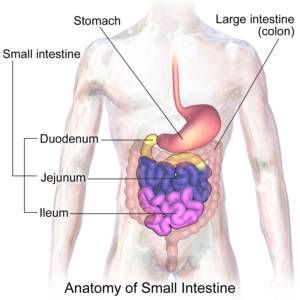
Patients with intestinal failure are typically treated with parenteral nutrition (PN), receiving nutrition intravenously, which allows the nutrients to bypass the digestive system altogether and go right into the bloodstream. However, some complications may arise that make PN no longer an option. If a patient is unable to receive PN or has a digestive condition that cannot be treated, an intestinal or multi-visceral transplant is likely the next step.
What is it?
Total parenteral nutrition (TPN) is a common procedure used to treat intestinal disorders and other diseases affecting the way the body absorbs nutrients. However, the liver, intestines, and other intra-abdominal organs can begin to fail following TPN treatments. If a patient’s intestines completely fail or they develop a life-threatening condition from TPN, an intestinal/multi-visceral transplant is usually the next step. Multiple pre-surgical evaluations will help surgeons determine whether a transplant is necessary, as well as the extent of the transplant needed. During the surgery, a Pediatric Gastrointestinal surgeon will remove any diseased or deficient organs and replace them with donor organs. An ileostomy is also performed following the transplant, bringing the ileum out of the hole in the abdominal wall to form a stoma, which allows for GI secretions to be released post-transplant.
What should I do to prepare?
Patients should not consume food within twenty-four hours prior to the procedure and will need to avoid certain dietary supplements and medications. They should also avoid aspirin two weeks prior to the procedure. Patients should speak with their surgeons so that they can make preparations at home for life after the surgery. Individuals that undergo this procedure will remain in the hospital to be monitored for several weeks after the procedure.
What happens during the process?
The patient will be under general anesthesia for this procedure, meaning that the anesthesia will make the patient become unconscious. After the surgeon opens up the patient’s lower abdomen, he/she will remove the diseased organs. Following this, the surgeon will connect the blood vessels from the donor organs to those of the patient. After functionally connecting the blood vessels, the surgeon will work to connect the donor organs to the patient’s GI tract. After the organs are in place, an ileostomy is performed, opening up the GI tract to the outside of the abdomen and forming a stoma. From this opening, surgeons can monitor the patient’s intestinal tract and remove digestive waste by allowing it to collect in an exterior pouch. The ileostomy may be reversed in the following months depending on the success of the transplant. This entire procedure takes between 8-10 hours.
What are the risks and potential complications?
Some associated risks and complications include, but are not limited to, infection of the small bowel, heart and breathing problems, blood clots, rejection of the donor organ, long-term effects of continued use of immunosuppressants, post-transplant lymphoproliferative disorder, and anesthetic complications.
Disclaimer:
All GlobeHealer Site content, including graphics, images, logos, and text, among other materials on the site are only for education purposes. This content is not intended to be a substitute for professional medical advice, and you should always contact your physician or qualified health provider for information regarding your health. Information on this site regarding the overview, diagnosis, and treatment of any kind should be looked at, in addition to the advice and information of your health care professional. Do not disregard medical advice or delay seeking treatment or medical advice due to information found on the GlobeHealer site. If there is even the possibility that you may have a medical emergency, seek treatment, call your doctor, or call 911 immediately. GlobeHealer does not endorse being the first line of communication in case of emergency and does not endorse any specific test, physician, facility, product, procedure, opinion, or other information that is or may be mentioned on this site or affiliated entities. Reliance of any and all information provided by GlobeHealer, its employees, affiliations, others appearing on the Site under the invitation of GlobeHealer, or visitors of the site is solely at your own risk and is not the responsibility of GlobeHealer.
Image Source: https://upload.wikimedia.org/wikipedia/commons/7/77/Blausen_0817_SmallIntestine_Anatomy.png
